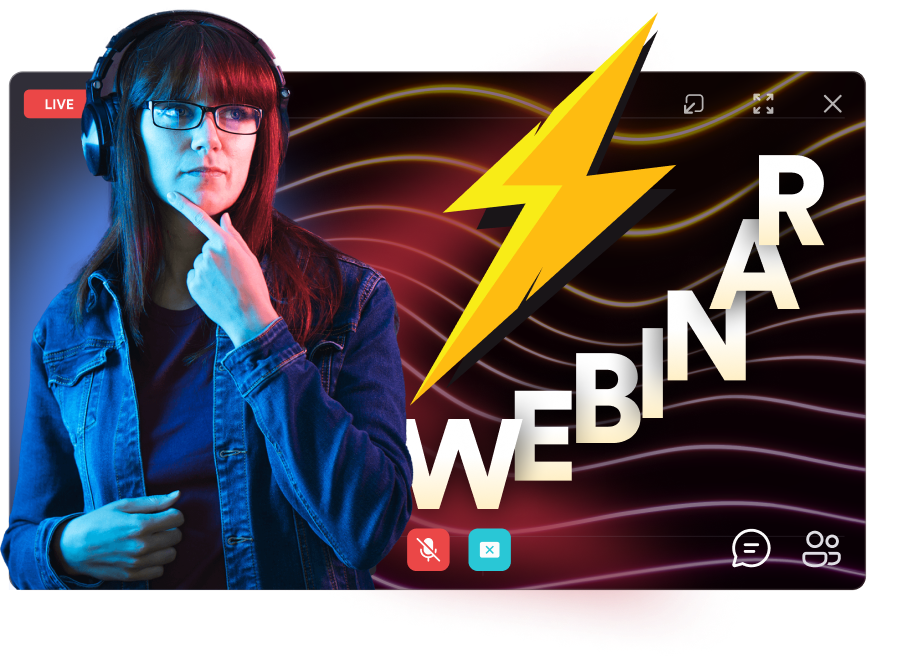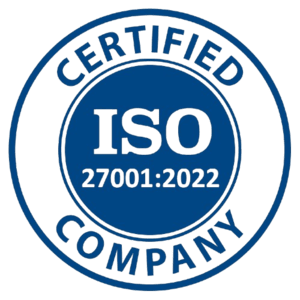
Webinar recordings play an extremely crucial role in marketing, lead generation, and nurturing initiatives, helping you build credibility and trust among your target audience. It is also a great resource to share with your webinar attendees as well as registrants who couldn’t attend the session. This recorded content not only allows revisiting of the session but also serves as an important medium to maintain consistent engagement with audiences post-webinar.
This blog will help you find the ways to effectively use webinar recordings, exploring key features, tools, and strategies to maximize their impact.
What are Webinar Recordings
Webinar recordings enable you to capture the live sessions in real time. This can be recorded in various forms, including audio and video versions. These recorded webinars help event organizers preserve the content delivered at the time of the event and repurpose and share it as needed.
Advantages and Benefits
Let’s explore some of the major advantages of leveraging webinar recordings:
1. Offer Extended Reach
While live webinars can be accessed only in real time, recorded ones are evergreen. Moreover, it can be shared with both attendees as well as the total webinar registrants, extending and expanding your reach.
These recordings can also be distributed through various channels in more than one format. It can be shared as short clips, on-demand sessions, and webinar highlights. You can also repurpose this recording into writing and include it in webinar key takeaways, post-webinar follow-ups, blogs, and more.
2. Flexibility for Content Repurposing
With recordings, you could create a huge impact with minimal efforts. If used thoughtfully, your webinar content can establish you and your brand as a thought leader and increase your credibility like never before.
You have the flexibility to convert your webinar recordings for lead nurturing campaigns, future marketing efforts, educational resources, and on-demand content.
3. Maintain Content and Delivery Quality
Webinar recordings also play a huge role in helping you deliver better webinars in the future. It helps you review the webinar content and work on improving areas that need attention.
This way you can easily tailor your content and continually provide better attendee experiences in subsequent events.
Process to Create a Webinar Recording
Choosing the Right Webinar Software
While selecting the webinar software or platform, ensure it has all necessary features, including:
1. Screen Sharing Support
It should allow you to share your screen or required applications.
2. High Definition Quality for Recording
Opt for software that supports high-definition video and clear audio.
3. Many Audio Options
Ability to choose between built-in microphones, headsets, or external audio sources.
There are multiple webinar software platforms available that offer a variety of features, including the ones mentioned above.
One of the most trusted webinar platforms is Airmeet, which offers high-quality webinar recording capabilities with high-value features like interactive virtual tables, breakout rooms, live streaming, multi-stage events, real-time chat, attendee engagement tools, and comprehensive analytics.
Setting Up Your Recording
Before starting the live event, it is important to set up everything beforehand to ensure seamless recording. The pre-recording steps that you need to keep in mind are as follows:
1. Stable Internet Connection
A stable connection is crucial for recording high-quality video and audio. Since this is also the content you will be repurposing, the quality and stability will have an impact on subsequent marketing initiatives too.
2. Webinar-related Devices and Software
Make sure all your webinar-related devices, required software, browser, and applications are working perfectly and updated with the latest version. Try and test all these prior to the webinar to avoid any disruptions in the schedule.
3. Proper Recording Settings
Adjust the recording setting to ensure the best quality. For example, select the appropriate, required resolutions and audio input before the event commences.
Now let us understand what needs to be done during the webinar recording.
Steps for Recording the Webinar
Initiating the Recording
Following are the steps you need to keep in mind while recording.
1. Start your webinar
Launch your webinar event as planned.
2. Click on the ‘Record’ button
Locate the record button within the platform’s interface and click on it to begin recording.
3. Conduct your webinar
Carry out your webinar session as planned. Make sure to speak clearly. Make sure to leverage the interactive elements that your webinar platform provides you with to make the session as interactive as possible.
Managing Quality During the Recording
To ensure that you record the best quality content, make sure to keep in mind the following pointers:
1. Minimize background noise
It is crucial to have zero or minimum background noise. It is counter-productive to host the live event and record it in a noisy environment. Use a quiet space and consider noise-canceling microphones.
2. Check the audio level
Make sure that your system audio and microphone are balanced.
Post-Webinar Content Repurposing To-do’s
Accessing and Downloading the Recording
Post the webinar, make sure to access the recording through your webinar platform. Most webinar platforms offer direct download options.
Once this is done, edit the webinar recording as needed, with relevant intros, outros, slides, etc. Cut out fillers, disruptions, or any unnecessary sections. To increase the visual appeal, you can add annotations or highlights.
Lastly, make sure to once again check the audio quality. Use tools to enhance the voice quality and reduce irrelevant background noises.
Uploading and Sharing
Once you’re done with the final review of the recording, it is ready to be shared.
You need to tailor your recording to meet the needs of your audience, based on the platform on which you’re sharing the recording.
For example, on social media platforms like LinkedIn and Facebook, you can share webinar clips or snippets.
Whereas on platforms like Youtube or Vimeo, you can curate your recording by adding an interesting thumbnail and a catchy and informative caption. These platforms offer a wider reach and potential monetization opportunities.
Finally, make sure that the recording is embedded on your website or on a separate landing page, specifically designed for lead generation.
Leveraging Webinar Recordings for Marketing
There are multiple ways in which webinar recordings can be used for marketing purposes, and if done properly, it can help you get potential leads and increase your ROI.
Here are some to consider:
1. On-demand webinars
Transform your recorded webinar into an on-demand resource.
This will allow the attendees to watch the webinar as and when required, at their convenience.
Additionally, by providing on-demand webinars, your chances of turning attendees into potential customers increase. This facilitates in enhancing the overall reach and brand awareness.
2. Blog Posts and Content Marketing
Use the content from your webinar to create blog posts or articles. This will increase traffic on your website, offer visitors valuable insights, and boost your brand awareness by establishing you as a thought-leader.
3. Email Campaigns
This is one of the most important ways of reaching out to your audience. Incorporate links to your recorded webinar in post-webinar follow up email campaigns. It enables you to re-engage with your webinar attendees, extend the shelflife of the value you provide them with, and also helps keep your brand fresh in their memory.
Best Practices for Webinar Recordings
Use high-quality microphones and make sure your webinar recording is in the apt format to enhance the quality.
For better audio quality, consider employing an external audio recorder.
Lastly, engagement with your audience doesn’t end with the live session. Make sure to follow up with emails or surveys to maintain their interests and add value. This helps in understanding your audience better and converting them into long-term customers.
Post-webinar, make sure to review the entire webinar recording and identify areas that need improvement. This is one of the simplest ways to ensure that you deliver the best webinar experiences to your audiences, consistently.
Tailor your content in accordance with the audience and market needs. Understand their needs, pain points and preferences and adjust your webinar topic, format and content accordingly.
Conclusion
These were some tips and tricks to leverage your webinar recordings. Make sure to go through this guide next time you plan to record your webinar and boost your overall success rate.
FAQs
Webinar recordings are highly effective tools that help in increasing the reach and in content repurposing. Moreover, they also help in reviewing the webinar content and identifying scope for improvement for subsequent events.
Minimize the background noise and consider noise-canceling microphones.
Webinar recording can be leveraged for marketing purposes in the following ways: producing on-demand webinars, creating blog posts for content marketing initiatives, posting snippets of the recording on social media, and creating personalized email campaigns.
Make sure that your internet connection is stable and your system is up-to-date. Check the recording settings prior to the webinar to ensure a seamless recording of the entire event.





























